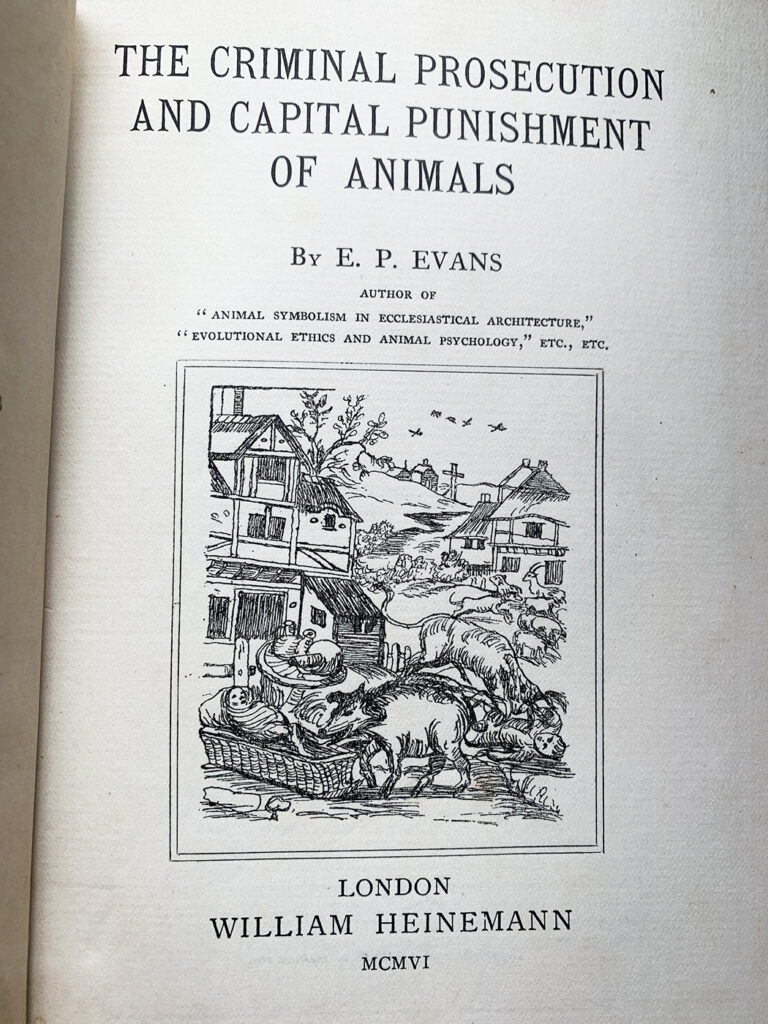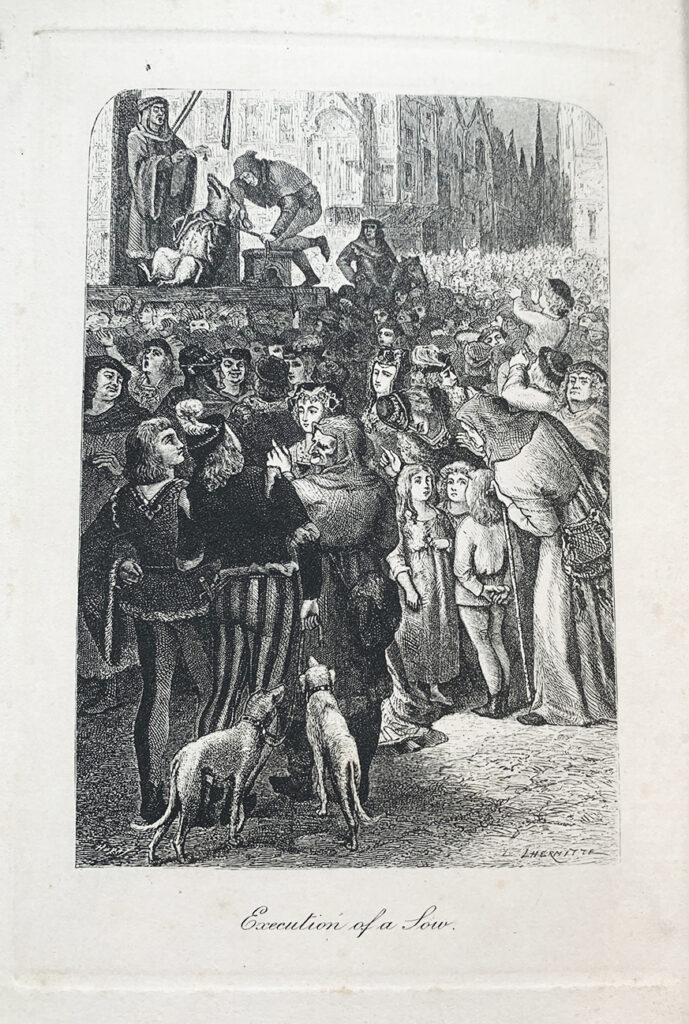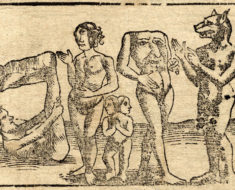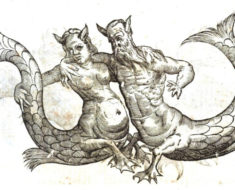I recently started reading Mary Roach’s latest book, Fuzz: When Nature Breaks the Law. In the introduction, she mentions a 1906 book called The Criminal Prosecution and Capital Punishment of Animals, by E. P. Evans. I’d never heard of animals being put on trial and punished, but as Roach points out, these cases happened hundreds of years ago. And many weird things happened hundreds of years ago. Needless to say, I had to find a copy of this book. Now that I have, allow me to share a few of its strange cases of killer pigs and the sentences they faced.

Let’s start on January 10, 1457, when a sow was convicted of “murder flagrantly committed on the person of Jehan Martin, aged five years, the son of Jehan Martin of Savigny.” The pig, who could offer no defense on account of it being a pig, was sentenced to be “hanged by the hind feet to a gallows-tree.” If that wasn’t bad enough, Evans adds that the swine’s six babies were found stained with blood and thus were included in the indictment as accomplices. The judge, however, showed mercy on the poor sucklings, noting that “in lack of any positive proof that they had assisted in mangling the deceased, they were restored to their owner, on condition that he should give bail for their appearance, should further evidence be forthcoming to prove their complicity in their mother’s crime.”
The owner, Jehan Bailly, wasn’t thrilled with this task. Weeks later he brought the six piglets back to the court and claimed he could not be accountable for their future conduct. In other words, he refused to take responsibility for any potential murders they might commit. The potentially evil swine were declared as vacant property, and forfeited to a noblewoman, Katherine de Barnault, Lady of Savigny.

Nearly forty years later, on June 14, 1494, another pig was arrested (were cuffs involved?) for having “strangled and defaced a young child in its cradle.” Witnesses claimed that at the time of the murder the child’s father was busy guarding his cattle and the mother was in the village. As Evans quotes from the case, “the infant being left alone in its cradle, the said pig entered during the said time the said house and disfigured and ate the face and neck of the said child, which, in consequence of the bites and defacements inflicted by the said pig, departed this life.”
The judge’s sentence was as follows: “We, in detestation and horror of the said crime, and to the end that an example may be made and justice maintained, have said, judged, sentenced, pronounced and appointed, that the said porker, now detained as a prisoner and confined in the said abbey, shall be by the master of high works hanged and strangled on a gibbet of wood near and adjoinant to the gallows and high place of execution belonging to the said monks, being contiguous to their fee-farm of Avin.”
And in one other case worth mentioning, in 1394, a pig was hanged in Mortaign, France, for the crime of sacrilegiously eating a consecrated wafer.
Evans’ book covers many other cases of animals facing the stiff arm of the law, such as a cock burned at the stake for the unnatural crime of laying an egg, dogs sentenced to the pillory in Vienna, excommunicated vermin, a horse condemned to death for homicide, and far too many more.





![Ted Serios, by Jule Eisenbud [Public domain], via Wikimedia Commons](https://www.weirdhistorian.com/wp-content/uploads/2017/05/Ted_Serios_1-crop-235x190.jpg)
